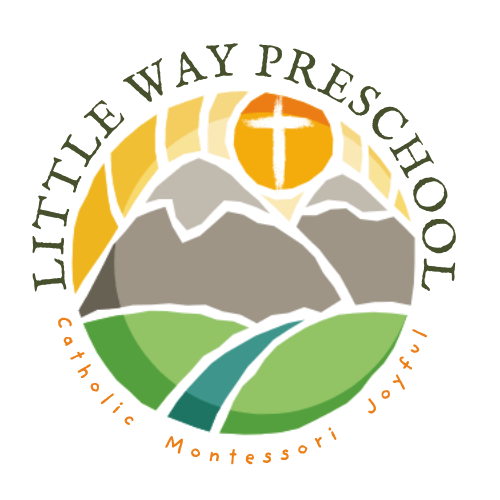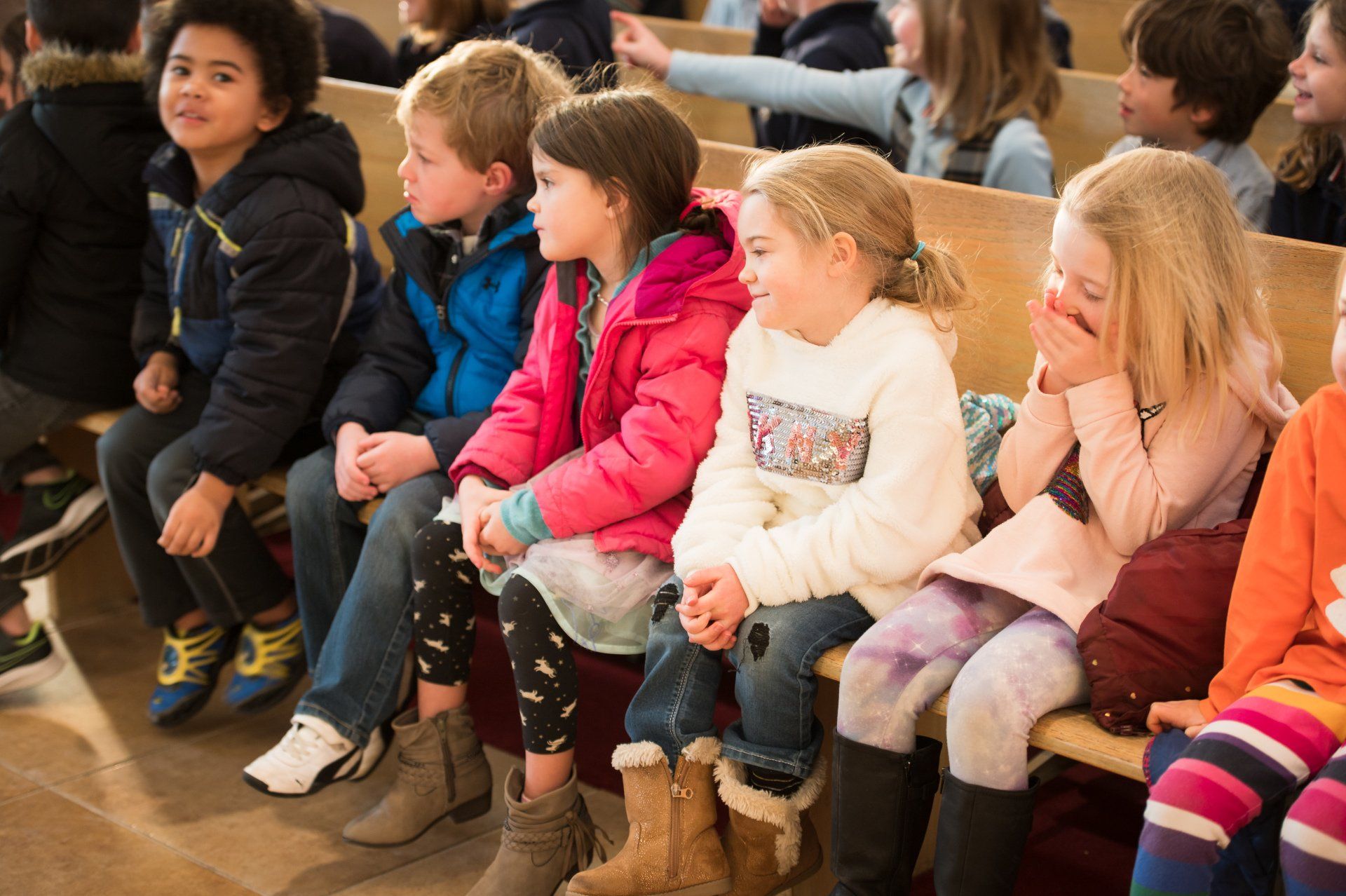St. Columba Little Way Preschool is based on the philosophy of Maria Montessori. During the early years of the 20th Century, Dr. Maria Montessori observed and worked with children in Italy at Casa de Bambini (Children’s House) and concluded that the early years of life are crucial to the functioning and growth of the individual. Children are enormously capable beings.
Montessori believed that children are sensitive to different kinds of learning at different times in their development. She called these “the sensitive periods”.
Thus we create environments to develop order, independence, coordination, and concentration. We provide materials that respond to the individual needs. The design of the classrooms helps in the creation of these environments.
The Montessori method has been and is very popular around the world with early childhood professionals and parents. The Montessori approach is designed to support the natural development of children in a well-prepared environment.
In conjunction with our Montessori-based philosophy, we offer a Science-based themed curriculum that works its way into all areas of the classroom, from Math, language, practical life, sensorial and geography, and botany. The children love to explore the classroom throughout the year as the theme changes. The children learn about science and the world around them by choosing what interests them in all classroom areas.
Our Science-based curriculum consists of Dinosaurs, Bugs and insects, Tropical Rainforests, Oceans and Ocean animals, Space and our Solar System and Colorado plants and animals along with plants and animals around the world.
The teacher’s role is to be a resource for the children by introducing new materials, inviting the children to ‘work’, and encouraging them to make choices throughout the classroom. The teacher facilitates learning as a “guide” for the child’s ideas and accomplishments. Montessori believed that “it is necessary for the teacher to guide the child without letting him feel her presence too much, so that she may be always ready to supply the desired help, but may never be the obstacle between the child and his experience” (Montessori, 1967). The Montessori teacher demonstrates key behaviors to implement this child-centered approach:
As Early childhood educators we need to have a strong understanding of how children from 2-5 years learn so that we can create an environment where children enjoy learning. Rote training, constant teacher direction or impatience with children’s choices discourages young children from being mentally active.
Current research continues to demonstrate that children learn best through self-initiated choices. Organizations such as The National Academy of Early Childhood Programs (NAEYC) have consistently published studies to demonstrate these ideas. The last 20 years have been rich in the research and findings of early brain development. (Birth to age 3). Current research continues to verify what Early Childhood Education (ECE) professionals have known all along – Children learn best through a self directed hands-on environment.
Our Discipline Policy
Teachers will facilitate the development of self-control in children by using positive guidance techniques such as modeling and encouraging expected behavior, redirecting children to more acceptable activity, helping them make good choices and setting clear limits. Matching and respecting children’s expectations and developing capabilities will be our goal.
Teachers will give clear, concise repetition of relevant rules that will be explained to them during calm moments, role playing (puppets), and small and large group times with activities and scenarios.
Teachers should redirect inappropriate behavior, but also catch them demonstrating good behavior and making good choices. Positive encouragement. Limit choices to avert potential problems and make appropriate choices for them. The use of the word “Time out” should not be used when redirecting a child. Words such as these label children in a classroom environment. Teachers are encouraged to get on the Childs level and explain in a soft voice what behavior was “not okay” and redirect them appropriately. Teachers are discouraged at anytime from talking across the room to a child. This again labels a child in the classroom and is also disruptive to the other children engaged in activities.
Teachers will give direct consequences when disciplining a child. For example, if a child bites another child. The child who is the agrressor shall hold ice on the bite. This creates empathy for the child who has been bitten.
The classroom should be in “zones” where quiet activities are separated from active ones this will create a multi-sensory experience that has a natural sense of sequence. The curriculum shall be centered around learning centers in a child directed environment. This will enforce the discipline policy on redirecting inappropriate behaviors. Giving children a direct consequence to their behavior is proven to be more effective than removing them from the environment. A childs behavior is modified best this way. This is the heart of developmentally appropriate teaching.
Positive Phrases to praise Children
“You worked a long time on that”
“what was the most fun part of making that:
“what do you like best about your work”
“Tell me more about your picture”
“That was so helpful”
“you got dressed right away today and we had extra playtime”
“your friend looked so happy when you shared your book”


